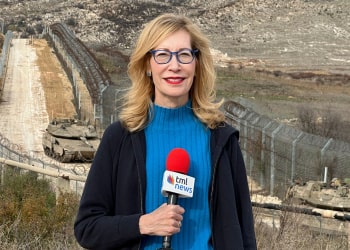Trump Cuts G7 Summit Short as Israel-Iran Conflict Escalates
US President Donald Trump abruptly left the Group of 7 summit in Canada on Monday evening, departing a day early to return to Washington as the Israel-Iran conflict rapidly escalated. The decision marked a significant shift in US posture and underscored the growing urgency inside the White House to respond to the unfolding Middle East crisis.
According to multiple officials, President Trump left the summit after receiving intelligence briefings indicating that Israeli forces were preparing or had already begun major strikes against Iran’s nuclear infrastructure. The Israeli government, led by Prime Minister Benjamin Netanyahu, had signaled that the operation would proceed with or without American backing. The US commander-in-chief, who had long resisted further military entanglements overseas, was now faced with a fast-moving war that risked drawing the United States in.
Before leaving the summit, President Trump had been in constant contact with his national security team and held calls with Netanyahu. The two leaders discussed Israel’s strategic goals, including the destruction of Iran’s deeply buried nuclear enrichment sites. The president had previously rebuffed Israeli requests to participate directly, particularly in providing the massive ordnance penetrator bombs needed to reach sites like Fordo. But as Israel acted alone, President Trump grew increasingly open to deeper US involvement.
Speaking to reporters aboard Air Force One, the president said his departure “wasn’t about a ceasefire” but rather about confronting a broader threat. “I have to be back. You probably see what I see,” he said, referring to the escalation in Iran. He later took to social media, demanding Iran’s “unconditional surrender” and threatening its Supreme Leader Ayatollah Ali Khamenei, whom he claimed the US knew how to target. “We’re not going to take him out (kill!), at least for now,” President Trump wrote.
At the G7 meeting in Kananaskis, Canada, leaders of the world’s major industrialized democracies were preparing to finalize a joint statement addressing the conflict. President Trump had initially resisted language that would bind the US to any specific position. However, before his departure, he agreed to sign a statement that condemned Iran, affirmed Israel’s right to defend itself, and called for protecting civilian populations.
German Chancellor Friedrich Merz, speaking to ZDF, praised Israel’s campaign, saying, “This is the dirty work that Israel does for all of us.” He accused Iran of destabilizing the region through proxies like Hezbollah and Hamas. Canadian Prime Minister Mark Carney noted that President Trump had pushed back on early drafts of the G7 language before agreeing to a firmer stance on Iran.
This holiday season, give to:
Truth and understanding
The Media Line's intrepid correspondents are in Israel, Gaza, Lebanon, Syria and Pakistan providing first-person reporting.
They all said they cover it.
We see it.
We report with just one agenda: the truth.


While other G7 leaders stayed to complete discussions on trade, global economic policy, and climate coordination, the American president left without attending the summit’s final day. His departure disrupted final talks, including scheduled engagements with non-G7 leaders and trade negotiations with Canada, Japan, and the European Union.
Back in Washington, the president convened his national security team in the Situation Room and was briefed on real-time developments in the Israeli campaign. Israeli airstrikes had reportedly caused “direct impacts” at Iran’s Natanz facility, according to the International Atomic Energy Agency. High-resolution satellite imagery indicated underground damage far more severe than initially believed.
Iran responded by launching missiles toward Israeli military facilities, including an area near Ramat Hasharon that houses Mossad’s headquarters and signal intelligence units. Videos verified by open-source analysts showed explosions near the site, though Israeli officials said key buildings were not struck.
At the same time, Iran dramatically restricted domestic internet access, blocking VPNs, disabling mobile data networks, and reportedly shutting down parts of the internet entirely. Tehran switched to a controlled intranet in what analysts called an effort to prevent cyber intrusions and suppress dissent. Iranian officials said the restrictions were necessary to counter Israeli intelligence and sabotage efforts.
A pro-Israel hacking group, Predatory Sparrow, claimed responsibility for a cyberattack on Sepah Bank, one of Iran’s largest financial institutions. The hack disrupted online access and affected fuel card services used by millions of Iranians.
The cyberattack, combined with the physical strikes on nuclear infrastructure, highlighted the multifront nature of Israel’s operation. Netanyahu has maintained that the campaign is aimed at destroying Iran’s nuclear capabilities, but analysts suggest the strikes have expanded to target institutions essential to Iran’s state functionality.
In an earlier Fox News interview, Netanyahu said regime change was not the official goal, but added, “It could certainly be the result.” He called on the Iranian people to “rise up” against their leadership. President Trump has echoed that sentiment without using the term “regime change,” a phrase that remains politically toxic in Washington after the Iraq War.
Inside the US, debate continues over how far the president will go. Vice President JD Vance warned against getting drawn into a full-scale war but acknowledged that Israel’s actions had already altered the strategic environment. “Iran had no need for enriched uranium above commercial levels,” Vance said, adding that President Trump had shown “remarkable restraint.”
Still, the president’s messaging has shifted notably since the start of the crisis. Where once he championed diplomacy and dismissed the idea of preemptive strikes, he now speaks of “ending the problem” entirely. “I’m not too much in the mood to negotiate,” he said earlier this week.
The early departure from the G7 summit thus marked more than a scheduling change—it was a signal that the US president had begun to abandon the diplomatic path and embrace a more aggressive response to Iran. Whether that results in direct American military action remains to be seen, but the president has made clear that US support for Israel is not limited to words alone.

